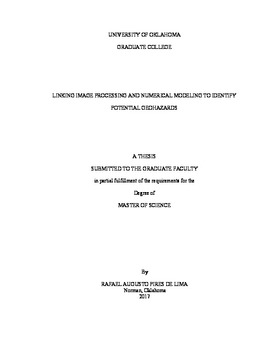| dc.description.abstract | Faults, along with natural fractures, may enhance production when confined within the reservoir. However, if the fault is connected to an aquifer, it may cause early water breakthrough in the reservoir. Even if they are not conductive, they pose a significant geohazard during drilling as fault slippage can cause shearing of casing/tubing leading to either sidetracking, or complete abandonment of the well.
In this thesis, I propose a simplistic approximation of dynamic conductivity of faults based on steady state flow equation. I use a geometric attribute; coherence, as a proxy for fault hydraulic conductivity and in a steady state flow equation to model dynamic flow.
This thesis was inspired by problems faced by several companies working the Eagle Ford shale reservoir of south Texas. Surveys often exceeds 1000 km2 and exhibit hundreds of faults. Most faults are not problematic; however, some connect with the deeper Edwards limestone aquifer. Wells that complete near these faults produce water.
This algorithm can provide early water production warnings and can provide simple, easy to compute useful input in field development in the absence of the more complete datasets required more rigorous reservoir simulation implemented in commercial software. This simple tool is designed to be used in a statistical, rather than deterministic manner, identifying problematic faults by comparing their orientation and connectivity to those known to be bad by previous drilling history. The computational time is less than 17% of a more rigorous conventional reservoir simulation. The model can be updated easily as more and more dataset are available during various stages of field development by ignoring important parameters for single well production such as facies, petrophysical and flow equations.
This algorithm is a fast and simple approximation that can be very useful in overall field management where one wishes to quickly identify problematic faults or fault sets. | en_US |
